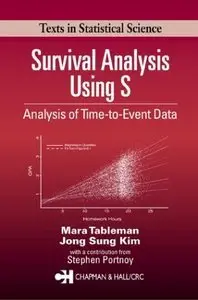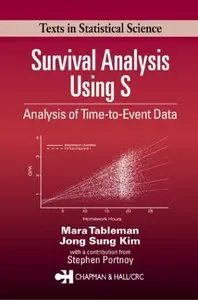Survival Analysis Using S: Analysis of Time-to-Event Data by Mara Tableman, Jong Sung Kim
English | 2003 | ISBN: 1584884088 | PDF | 280 pages | 1,9 MB
English | 2003 | ISBN: 1584884088 | PDF | 280 pages | 1,9 MB
Survival Analysis Using S: Analysis of Time-to-Event Data is designed as a text for a one-semester or one-quarter course in survival analysis for upper-level or graduate students in statistics, biostatistics, and epidemiology.
Prerequisites are a standard pre-calculus first course in probability and statistics, and a course in applied linear regression models. No prior knowledge of S or R is assumed. A wide choice of exercises is included, some intended for more advanced students with a first course in mathematical statistics. The authors emphasize parametric log-linear models, while also detailing nonparametric procedures along with model building and data diagnostics. Medical and public health researchers will find the discussion of cut point analysis with bootstrap validation, competing risks and the cumulative incidence estimator, and the analysis of left-truncated and right-censored data invaluable.
The bootstrap procedure checks robustness of cut point analysis and determines cut point(s). In a chapter written by Stephen Portnoy, censored regression quantiles - a new nonparametric regression methodology (2003) - is developed to identify important forms of population heterogeneity and to detect departures from traditional Cox models. By generalizing the Kaplan-Meier estimator to regression models for conditional quantiles, this methods provides a valuable complement to traditional Cox proportional hazards approaches.



